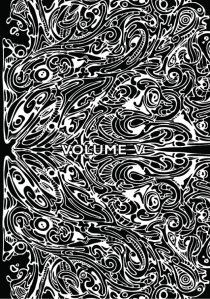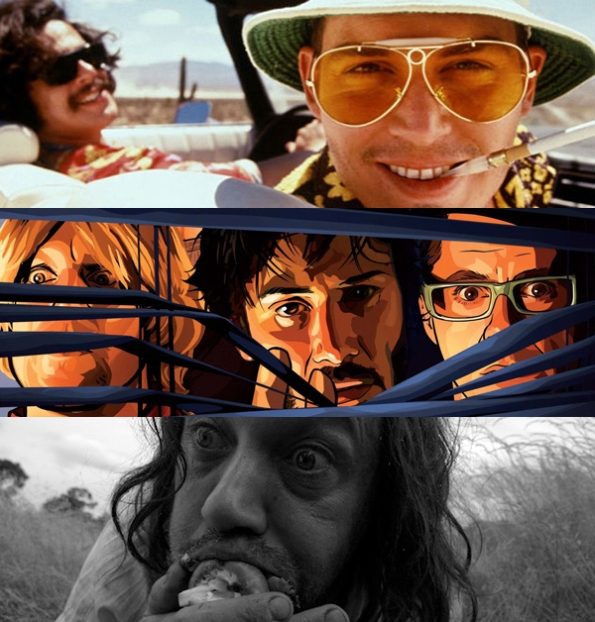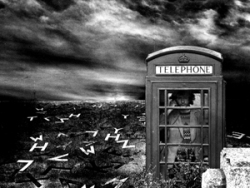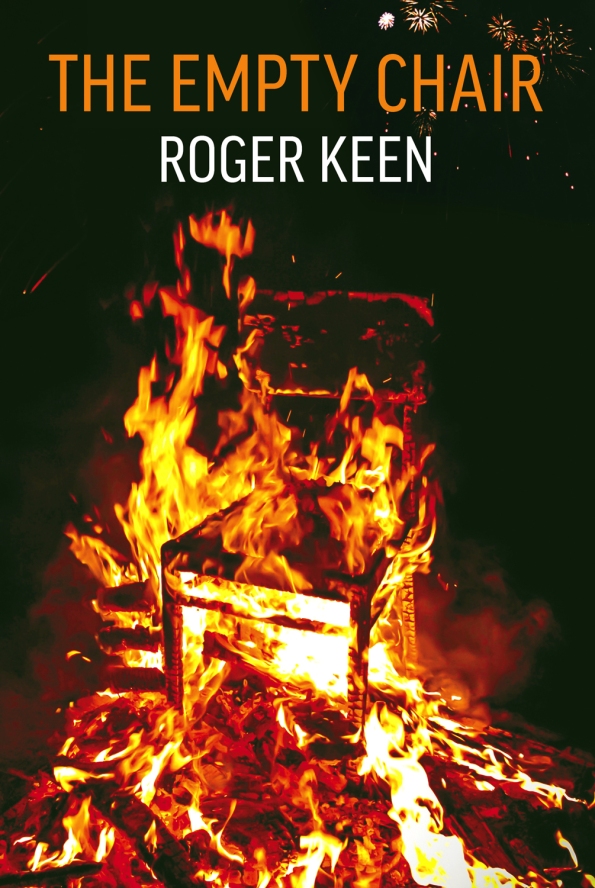Archive
Avatar: The Way of Cliché
Thoughts on Avatar: The Way of Water, done with reference to my ‘Psychedelia in the Movies’ strand, revisited and updated in the soon-to-be-published collection Man of Letters…
The 2009 film’s innovative Fusion Camera System 3D was enchanting in a notably ‘psychedelic’ way, but does the sequel build on this trend…?
In December 2022 a long-awaited moment finally arrived: the cinema release of the first of four projected sequels to the ground-breaking 3D blockbuster Avatar, after a thirteen-year gestation period. Within the psychedelic community Avatar was noted for a having a distinct trippy quality, albeit an ambient one, which made it comparable to movies such as Stanley Kubrick’s 2001: A Space Odyssey and Alejandro Jodorowsky’s The Holy Mountain, which caried the tropes but didn’t feature the actual drugs. As Erik Davis said in his 2010 article ‘Aya Avatar’:
Eco-futuristic dreams are now indistinguishable from the visionary potential of media technology itself. Indeed, whether you are talking form (ground-breaking 3D animation) or content (cyber-hippie wetdream decor), Cameron’s visual and technological rhetoric is impossible to disentangle from hallucinogenic experience.
Indeed Avatar, together with Tim Burton’s Alice in Wonderland – released three months later – seemed to portend a new dawn in ambient psychedelic movies where 3D and state-of-the-art VFX enabled a quasi-altered state within the cinema viewing experience itself… Read More on: Medium
Strange Brew: DMT Cinema goes Mainstream

Marvel’s DOCTOR STRANGE..Doctor Stephen Strange (Benedict Cumberbatch)..Photo Credit: Film Frame ..©2016 Marvel. All Rights Reserved.
My latest piece for Reality Sandwich explores the notable psychedelic elements in Doctor Strange, linking it to Avatar, Inception, The Matrix and other cyberdelic movies.
Back in 2009, Gaspar Noé’s Enter the Void appeared to herald a new era in psychedelic cinema, where increasing awareness and appreciation of DMT states fused dramatically with rapid advances in visual effects technology, to give rise to a better, more subtle and sophisticated film iconography that transcended the shortcomings of earlier years and got much closer to depicting the actuality of these fugitive and evanescent states. Noé’s lengthy extemporised sequences, involving fantastic voyages through fractal geometries and transmogrifying amoeboid forms, evoked both internal and external space adventure, and for the initiated he very much had it cracked. But despite high critical acclaim in some quarters,Enter the Void bombed at the box office and abjectly failed to kick-start a tryptamine-cinema renaissance. Seemingly by being so completely focussed on the arcane realms of the psychedelic inscape, it was too purist for many, lacked sufficient narrative underpinning and didn’t press enough buttons in the vital area of entertainment as well as enlightenment.
Cut to 2016 and in the latest Marvel blockbuster, the eponymous Doctor Strange – played assuredly by Benedict Cumberbatch – has his rationality and scepticism smashed by shamanic ninja the Ancient One (Tilda Swinton), and after first discovering his astral body, he is then hurtled onto an cosmic roller-coaster ride that more than uncannily resembles Noé’s void. The Doctor whizzes through a world of eidetically coloured planetary bodies, black holes, fractals and kaleidoscopic visions, coming to witness his own fingers sprouting hands whose fingers sprout yet more hands, and so on, and he finally becomes a true believer in alternate dimensionality. And in many other discombobulatingly trippy sequences, using further advanced generations of visual effects and 3D technology, the latest psychedelic fare is once again delivered successfully to the masses – by wrapping it in the entertainment-friendly foil of science fiction.
Read more on Reality Sandwich.
Psychedelia in the Movies, Part 2 – Reality Sandwich
Part 2 of my article Psychedelia in the Movies, originally published in the Psypress UK Journal 2015 Vol IV, has been republished on Reality Sandwich alongside Part 1, including the illustrative video clips. So the the whole story, including text and imagery is now available online!
Once the late ’60s boom in acid culture and acid cinema had dissipated, the psychedelic movie became another component of the fringe and the experimental, something to recur and be revived at intervals, a pattern that continues into the present. As we saw in ‘Part 1’, a principal avenue of this tendency involved name directors, associated with the weird and offbeat, taking on solid psychedelic literary properties – such as Ken Russell, the work of John C. Lily and Altered States; and David Cronenberg, the work of William Burroughs and Naked Lunch. The next big milestone in psychedelic cinema occurred in just the same fashion, with Terry Gilliam, Hunter S. Thompson and Fear and Loathing in Las Vegas (1998).
With his track record in mind-bending fantasies such as Time Bandits (1981) and Brazil (1985), Terry Gilliam would seem the ideal director to tackle Thompson’s tale of madcap psychedelic debauchery, where the ‘effects’ are already ‘scripted’, rendered in electrifyingly graphic prose. But Gilliam came into the difficult pre-production process late, having to produce a new script in a short time, and the filming itself proved as chaotic as the movie’s contents. The end result achieved a disappointing box office performance and very mixed reviews, with many critics understandably attributing the characters’ qualities of waywardness and incoherence to the movie plot itself.
Whilst falling short of being a totally satisfying adaptation of the book, Fear and Loathing in Las Vegas is nevertheless a very worthy effort in the reification of psychedelic effects and head spaces for the screen. Gilliam wanted the film to feel like a trip from beginning to end, and with cinematographer Nicola Pecorini, he designed a catalogue of techniques to match the qualities of each of the many drugs that are consumed, such as melting colours and flare effects for mescaline, and wide angles and morphing for LSD. Voice-over narration from Johnny Depp’s Raoul Duke provides much-needed structure and grounding, bringing us back to the novel and Thompson’s original vision as a bulwark against drug chaos swamping everything.
Read more on Reality Sandwich.
Psychedelia in the Movies, Part 2
 The new Psypress UK 2015 Vol V Journal contains Part 2 of my exploration of psychedelic movies, taking the story into the late 1990s and up to the present. Films containing notable trip sequences include Fear and Loathing in Las Vegas, Enter the Void, and A Field in England, and clips can be viewed below. Other trippy movies featured include the sci-fi-oriented A Scanner Darkly and Inception, and here trailers are posted, as they convey the overall weird ambience better than any particular isolated scene.
The new Psypress UK 2015 Vol V Journal contains Part 2 of my exploration of psychedelic movies, taking the story into the late 1990s and up to the present. Films containing notable trip sequences include Fear and Loathing in Las Vegas, Enter the Void, and A Field in England, and clips can be viewed below. Other trippy movies featured include the sci-fi-oriented A Scanner Darkly and Inception, and here trailers are posted, as they convey the overall weird ambience better than any particular isolated scene.
The article also features a look at the history of Lewis Carroll’s Alice in cinema, in particular the Tim Burton adaptation, with its highly psychedelic production design, further enhanced by 3-D. A clip of Burton’s Mad Hatter’s tea party is included, together with another Alice short animation, Malice in Wonderland, which is particularly trippy in its constantly metamorphosing effects. The clips follow the same order as the accounts in the text.
Psypress 2015 Vol V also features inspiring pieces from Graham St John, James Oroc, Julian Vayne, Jani Pestana and David Luke. To purchase a copy please visit the Psypress Shop.
Fear and Loathing in Las Vegas (1998). This clip shows the latter part of the hotel lobby ‘Sunshine’ acid trip, where the carpet liquefies as reality distorts and the barroom clientele transmogrify into giant leering lizards. Heavy or what!
A Scanner Darkly (2006). This trailer gives a good impression of the unique overall schizoid hallucinatory feel of the movie. The animation overlay, achieved through interpolated rotoscoping, hovers ambiguously between real and cartoon; and then there’s that being from the next world, with a head covered in eyes…
The Gospel According to Andy, Leaf, Roger and Bill
When I had the mushroom-inspired vision of The Cult of the Novel way back in 1979 – written about at the finale of The Mad Artist – I knew that although it was highly organised it was also fanciful and solipsistic and I could only hope that somehow it would filter into the outside world and connect with like-minded individuals. It didn’t much at the time and history was against me, with hippydom and psychedelia on the wane and Thatcherite values about to engulf most everything. Cut to thirty-plus years later and people are talking about a psychedelic renaissance, with the old and new coming together and the golden era of 1960s-’70s psychedelia being re-evaluated.
I’ve often asked myself why it took so long for me to finally formulate and write The Mad Artist, and perhaps it was because I wasn’t ready before or perhaps the world wasn’t ready. When I did publish it in 2010, I looked around for similar contemporary books and couldn’t find any; though Albion Dreaming by Andy Roberts, a history of LSD use in Britain, was on a most similar wavelength. Then shortly afterwards along came Bill Booker, whose Trippers, a personal memoir of LSD and the ’70s scene, is very like The Mad Artist and also had a long gestation period. And then Leaf Fielding leaped into the frame with his To Live Outside the Law, a much more wide-reaching and influential memoir about the same zeitgeist, with the added spice of the inside story of the Operation Julie bust.
The four of us liaised and chatted extensively about our shared literary involvement, and it was Bill’s idea to form the Facebook page The Semi-Secret Fellowship of Freaks, named after the original fellowship in Trippers. We were joined by Rob Dickins, a Freak of a newer generation, not even born in 1979, but very much tuned to the same vibes, as demonstrated by his site PsypressUK and subsequently his recently published novella Erin. The page provided one of several focuses for interaction, discussion and more speculation about this psychedelic renaissance we are undergoing. Something of a ‘novel cult’ was getting together. Read more…
3-D—A Vicariously Trippy Experience
 The news that Alice in Wonderland has become the tenth highest grossing movie of all time, supplanting Peter Jackson’s The Two Towers, further strengthens the hold the 3-D phenomenon has taken over cinema. The fact that an offbeat fantasy, which did not receive the highest critical praise, could be so successful is another indication that audiences are flocking to cinemas for the spectacle, the buzz of 3-D alone, with subject matter a secondary concern. So what exactly is the nature of the new 3-D’s seductive allure, its x-factor, its secret ingredient? As psychedelic initiates have realised, 3-D produces something like an altered state, a non-ordinary level of sensory experience that is comparable to a drug trip.
The news that Alice in Wonderland has become the tenth highest grossing movie of all time, supplanting Peter Jackson’s The Two Towers, further strengthens the hold the 3-D phenomenon has taken over cinema. The fact that an offbeat fantasy, which did not receive the highest critical praise, could be so successful is another indication that audiences are flocking to cinemas for the spectacle, the buzz of 3-D alone, with subject matter a secondary concern. So what exactly is the nature of the new 3-D’s seductive allure, its x-factor, its secret ingredient? As psychedelic initiates have realised, 3-D produces something like an altered state, a non-ordinary level of sensory experience that is comparable to a drug trip.
The very act of putting on the glasses and seeing things differently is like passing through a gateway, or cleansing doors of perception. Then there’s the strangeness, the strikingly unusual quality of 3-D vision, where everything is heightened, surfaces and textures are more alive and resonant, and the commonplace becomes transfigured and imbued with specialness. The nature of how things are rendered in 3-D becomes part of the viewing pleasure, as important a factor as plot, action and characterisation; and the anticipation of the next 3-D thrill, plus the sense of immersement in another realm, take the audience beyond mere cinema into theme-park-ride and virtual-reality territory—other parallels for chemically enhanced consciousness.
Moreover, Alice in Wonderland proves the case that 3-D movies are becoming trippier in terms of narrative and design as well as in sensory effect. The story of Alice has been a favourite paradigm for trippiness ever since Grace Slick’s ‘White Rabbit’ marshalled up the references: substances to make you grow or shrink, a hookah-smoking Caterpillar and the talking Rabbit himself—a film favourite from Harvey to Donnie Darko to Inland Empire. Using a medley of techniques—green screen, motion capture, live action and full animation—Tim Burton has pieced together a new Wonderland for the 2010s, and with a combination of his already well-developed Gothic-weird sensibilities and the astute use of 3-D, he has rendered the material into a totally bone fide trippy adventure. In 3-D the z-axis layering of the various elements—themselves set at different points in the scale of reality to unreality—creates a synergy that gives rise to an entirely new whole: an alloy of the real and imaginary that lives independently on its own terms…how psychedelic is that? Read more…





